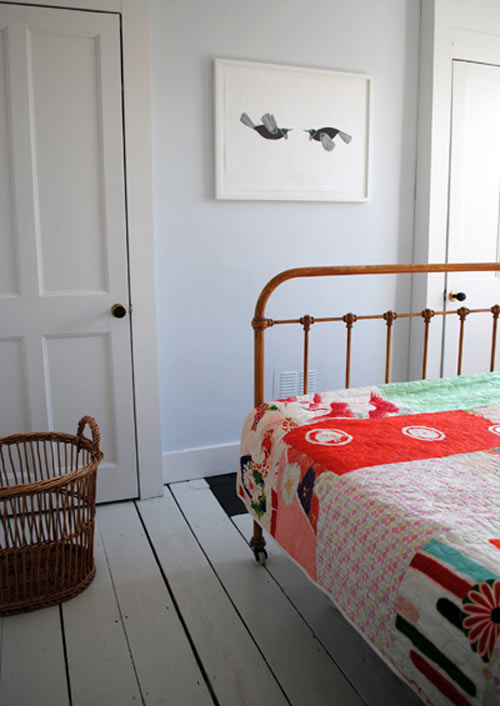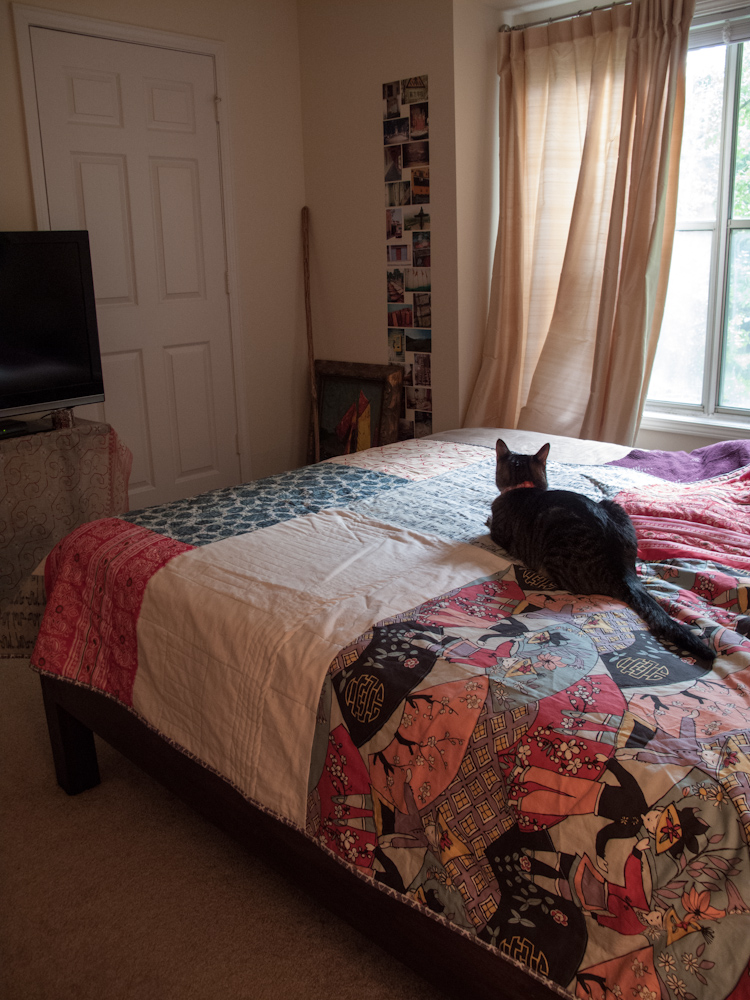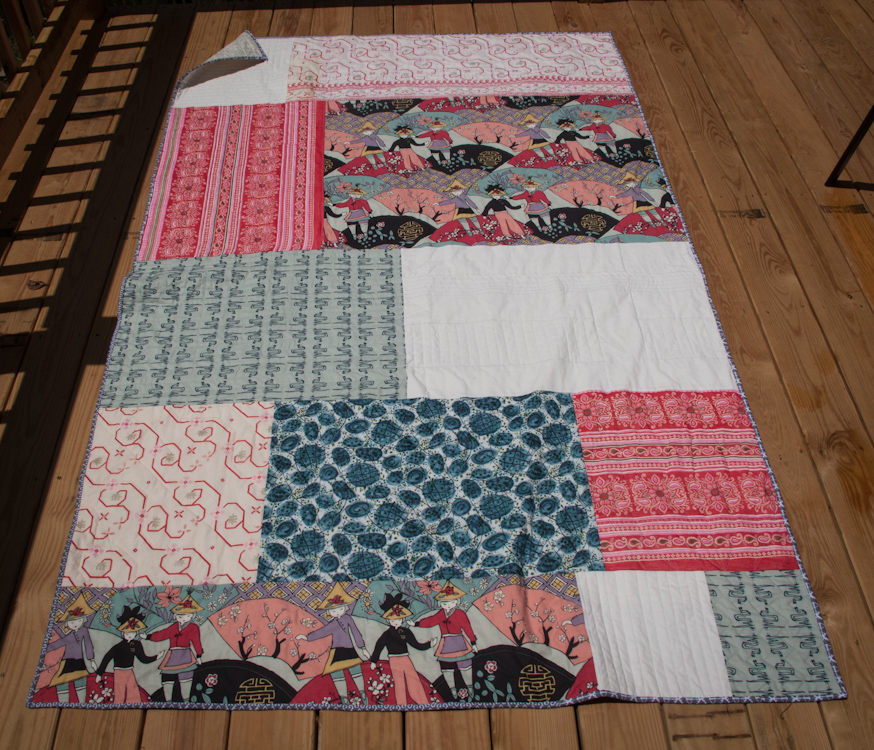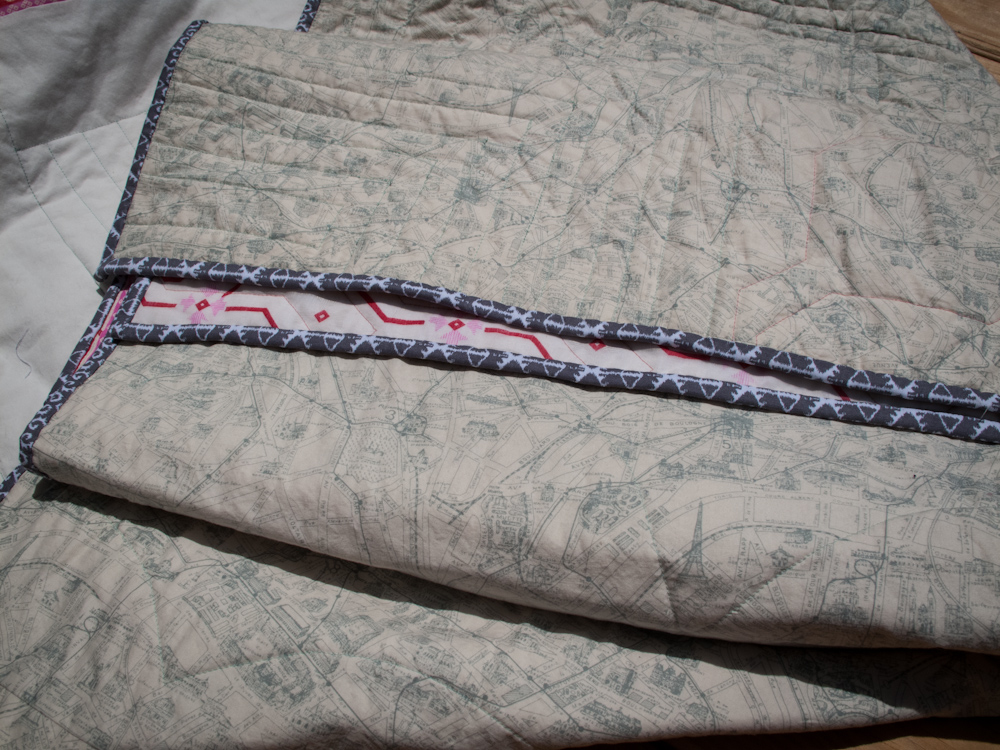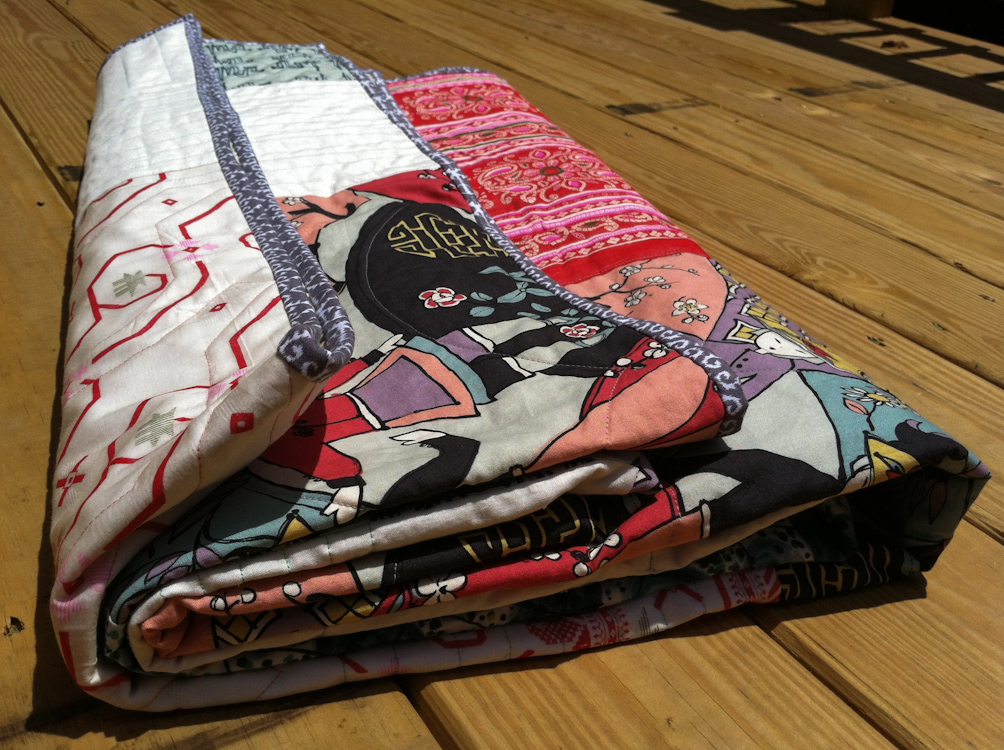Use for a vintage sari
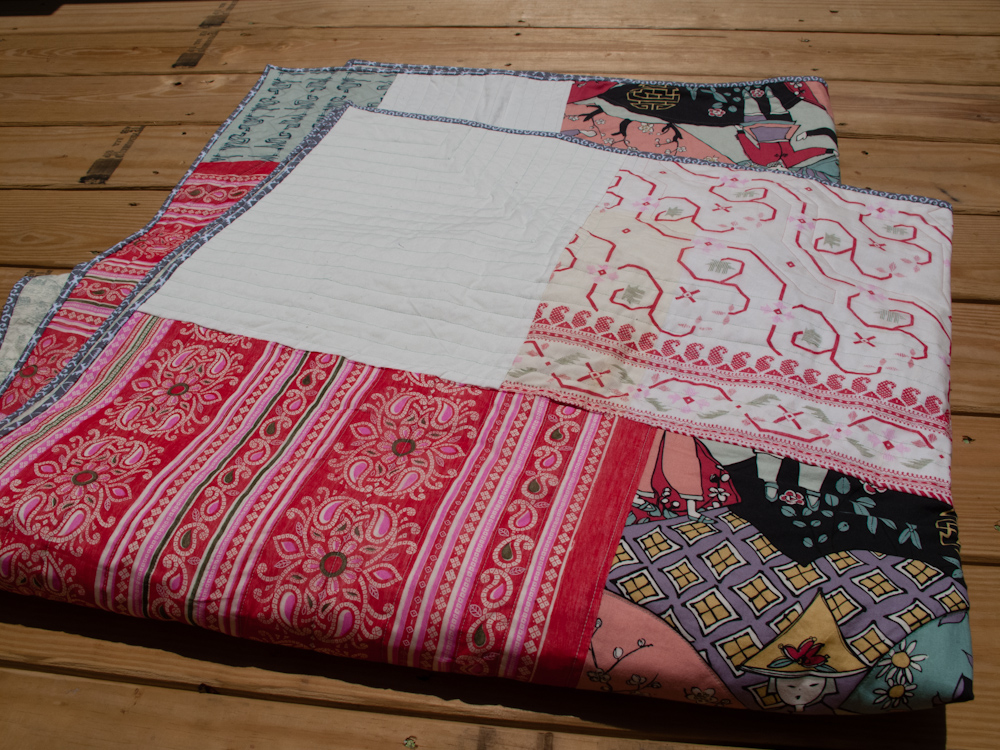
I tend to buy fabrics when I see them and adore them, and not when I need them or have any particular project in mind. Add to this my Mom, who sees great deals on small tidbits and passes them along to me as well. Our habit of collecting bits of designs and colors and patterns that we like has lead me to create a very simple twin-sized "sari quilt."
She found this spectacular pinky-red vintage sari at an estate sale awhile ago for $5, and in the process of my parents' downsizing, handed it off to me. All the pink-red-and-cream patterned pieces in this quilt were pieces of the long, luscious, lightweight sari strip--over five yards of gorgeous motif. I was terrified to cut it for the longest time, thinking I would find the right project after cutting into it for something else, and waste its glorious hues on something I felt lukewarm about. It is quite thin, and also old and delicate, so I needed to find just the thing to do with it. (There are still several yards left for other future works.)
The fabric featuring Asian ladies with fans was also a gift from my Mom, for advent at Christmas time, as we both have weaknesses for those teals and pinks and blacks. I reminded her when she gave me these that she had also given me a few swatches of Mary Fisher's fabric line inspired by Africa--which she picked up on a trip to Michigan last year--in the same color scheme.
Suddenly, I had all these bits that worked together naturally. I had also seen a picture of a child's bedroom that I adored, with a simple large-scale patchwork across the twin bed, which I loved for its bold fabrics and simplicity. That was where this quilt was born; I loved each of these fabrics, and they way they spoke to one another, but not to the point where I wanted to see them hacked up into smaller wedges for a traditional quilt pattern. I just wanted to be able to see them all together, on one bed, contained within one long strip of binding.
I started this just after my foot surgery in December, and finished it today. I used one of my favorite stash fabrics, a grey-and-white ikat, for the binding. I used Denyse Schmidt's straight-cut binding method (rather than a bias-cut binding) and loved the variation. I don't think I'll use a bias-cut binding ever again. Direction are in her new, incredible book.
For the back, Ben helped me chose an amazing neutral that was exactly the right fit--a pale teal and cream interpretation of the Paris subway maps; delicate, small-scale, and almost invisible unless you take a second glance.
